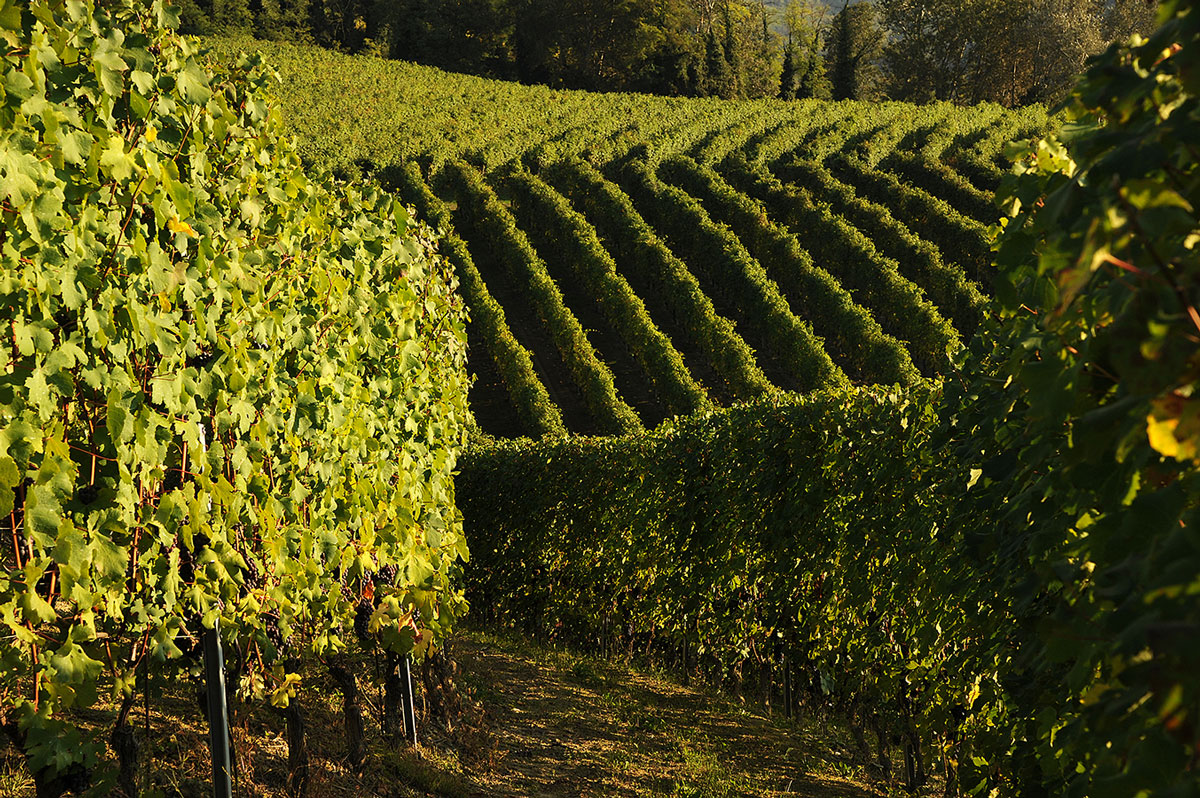Neive: the pearl of Barbaresco: one of the most distinctive terroirs in the Langhe, land of four wines.

Neive is the productive heart of Barbaresco, one of the most prestigious denominations in the Langhe. Here, the vineyards climb up hills brushed with spectacular rows of vines, often tracing the entire curve of the slopes. The bends of the Tanaro River and the many streams that cut through the area create hidden side valleys, often covered with woods and hazelnut groves, as well as red-roofed villages perched on the hilltops, known as «bricchi». A frequent sight is the «Rocche», geological formations consisting in ravines created by the erosive action of water.

Neive one of the most beautiful villages in Italy
Awarded with a “Bandiera arancione” by the Touring Club, Neive is a sociable and lively town, an important hub for spreading the food and wine culture of eastern Langhe.
It is the «land of four wines» – Barbaresco, Dolcetto d’Alba, Barbera d’Alba and Moscato d’Asti – which bring out utmost expressions in this area. But Neive is also the perfect starting point for exploring Langhe and Monferrato, as it is situated halfway between Asti and Alba, the main urban centers of the area.
The Rivetti family cultivates 55 hectares of land between Neive, Mango and Costigliole d’Asti, situated between Langhe and Monferrato. All vineyards with Nebbiolo for Barbaresco, covering around 21 hectares, are located within the municipality of Neive and spread across some of the most prestigious Menzioni Geografiche Aggiuntive (MGA) of the Barbaresco denomination: Bricco di Neive, Bric Micca and Rivetti, situated on the southern ridge of the Tinella stream.
Bricco Di Neive
The vineyards in Bricco di Neive – located next to the winery – are the company’s oldest ones, cultivated manually by the Rivetti family for more than four generations. They were owned by great-grandfather Giuseppe and, today, are the crown jewel of production, with vines that are almost a century old. The vineyards are mainly cultivated with Nebbiolo for Barbaresco, but Moscato and Barbera are also planted, especially in the «Boschi» vineyard. Bricco di Neive stands out for its high altitude, exceeding 400 meters, and its reddish soils. The results are remarkably austere wines with a solid structure, good acidity and mineral notes that enhance their already incredible aging potential.

Bric Micca
Not far from Bricco di Neive rises the vineyard of «Micca», found within the homonymous farmstead and now part of the Menzione Geografica of the same name. The rows extend from south to the west, on a single plot cultivated with Nebbiolo and Dolcetto. The white and sandy soils give rise to full and austere wines, characterized by excellent freshness. The Barbaresco wines produced here are more approachable compared to those from Bricco di Neive and can be enjoyed shortly after aging is completed.

Rivetti
The «Rivetti» MGA is named after the hamlet of Neive where our family has lived since the 1800s. Our ancestral farmhouse can still be found here. The vineyards climb along the ridge that goes from the Tinella Valley to reach Bricco di Neive, enjoying southwestern exposure. This is the reason why Giuseppe Rivetti and his descendants were called «I Valletta». The soils, typically reddish and clayey, yield wines with excellent structure and are easy to drink. Soon, these very vineyards will give rise to the new Barbaresco Rivetti.

Costigliole d'Asti
The vineyards of Costigliole d'Asti are located in the area of Monferrato situated in Asti and bordering the Langhe region of Barbaresco. The plots – acquired by Dante Rivetti in the 1980s – are found within the hamlets of Bionzo and Santa Margherita. The soils become lighter, and layers of sand and limestone replace the clays of the Langhe: these are perfect for cultivating Barbera and Moscato, as well as Pinot Nero and Chardonnay, which have found their ideal home here. In fact, Costigliole d’Asti is where Dante Rivetti's two Metodo Classico wines – a white and a rosé – come from.

Mango
The Rivetti family's Moscato Bianco vineyards extend over an area of approximately 2 hectares, between the hamlet of San Donato and the rural church of Sant’Elena: a splendid amphitheater of vine rows overlooking the narrow valley of the Belbo River. We are in the heart of the Moscato Hills, places dear to famed Italian author Beppe Fenoglio who described them in his books “La Malora” and “Il Partigiano Johnny”. The soils are made up of sandy limestone conglomerates and whitish marls, which give the land the typical appearance of «calcina», a fine, white powder that lifts up like small puffs with every step. The white soils and excellent exposure give rise to exquisitely fine Moscato d’Asti wines distinguished by an intense floral bouquet and excellent freshness.
